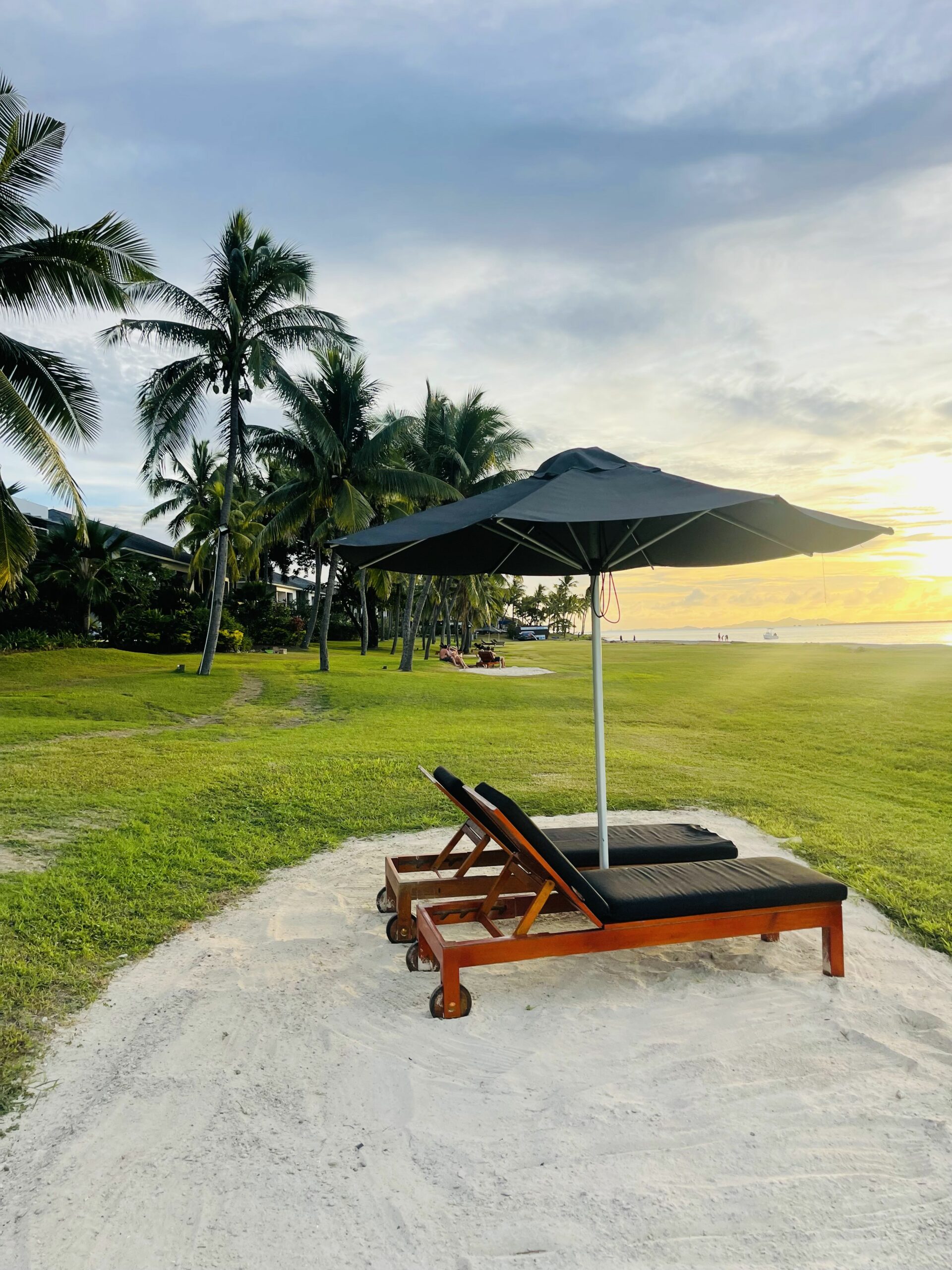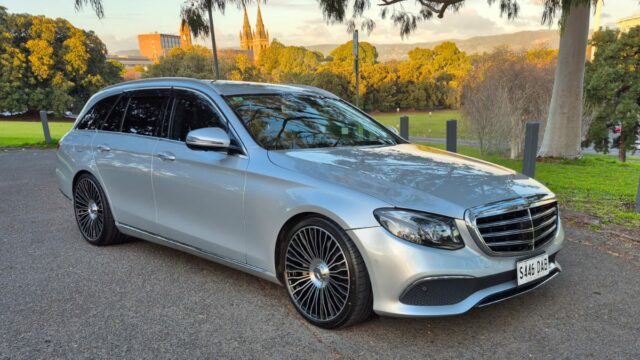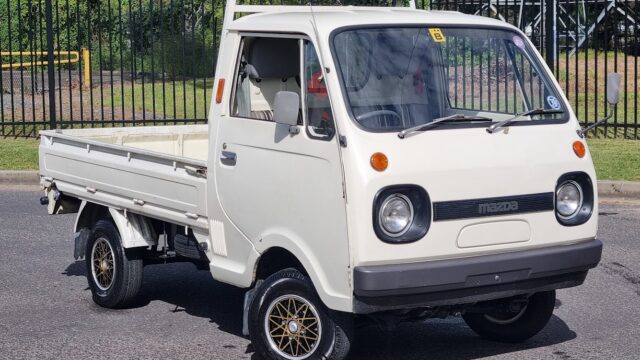Having recently tied the knot, my new bride and I headed off to Fiji for 8 days for our long-awaited honeymoon. Mrs Chef owns a number of businesses herself, so between the two of us, 8 days of enforced relaxation without a laptop in sight was as close as we’d get to heaven on Earth. The first few days were spent lounging around the pool at a resort in Denarau, knocking back cocktails, saying “Bula” to every local that walked past. Standard fare for Fiji. But I was hanging for a drive somewhere.
I relish every opportunity to drive in a foreign country, partly because I just love driving, but also because driving enables you to learn so much more about the culture of the country you’re visiting. And so I discovered that, if we tight-arsed the accommodation costs for the last couple of days, we could hire a car and still end up spending roughly the same money as if we’d stayed at the resort.
A quick peruse of Google Maps suggested we could comfortably do a full lap of Viti Levu (the main island) in two days, driving the main road that circles the island. The busiest road is the one between Nadi, where we were staying and Suva, the capital, with Queens Road hugging the south east side of Viti Levu, and Kings Road winding around the north east part of the island. Driving times: 3.5 hours via Queens Road, 6.5 hours via Kings Road.
The hire car industry in Fiji is largely unregulated, and I had been warned about using the cheap local hire car places, lest I end up with a 20 year old Corolla Fielder with a busted front bar and ball joints that collapse at the sight of a corner. So I opted to hire through Europcar, whose Fijian website promised a wide range of fairly decent new cars to choose from at reasonable prices. They even had a “prestige” option of a brand new looking VW Vento (think Golf sedan) with manual transmission…or similar. I was sold.
What we expected:
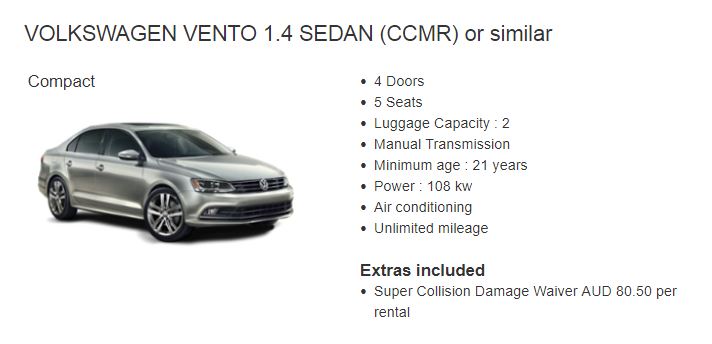
What we got:
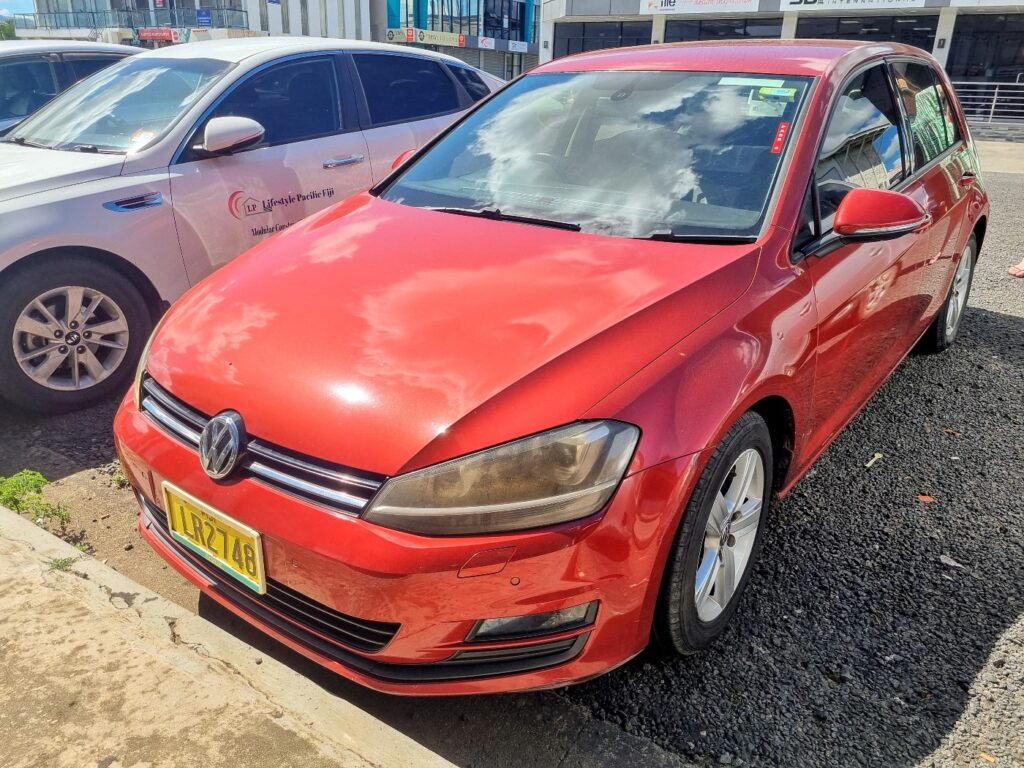
My first taste of Fijian automotive culture came when I was introduced to the “or similar” car I actually received from Europcar. A 10-year old VW Golf hatch with DSG, dents and scratches on every panel, a mismatched passenger door, missing driver’s door lock cover, horrendously faded headlights and faded seatbelts that looked like they’d been hoiked out of another car all together (my guess is that was cheaper than replacing the factory pre-tensioners after the last accident that took out the passenger door). The replacement seatbelts would periodically unlatch themselves at random times, so their effectiveness in an actual accident was close to zero. Did it have working airbags? Unlikely.
Mrs Chef and I shrugged our shoulders and loaded up the car, and joined the Queens Road traffic for the trip to Suva. Our first challenge came about 2km in, when the TPMS started squawking that the tyre pressures were low. At this point, I was fairly sure that the pre-hire check by the mechanics included a re-set of all the fault codes without bothering to check what they were. A quick visual of the tyres by the side of the road suggested nothing was looking close to flat, so we pushed on and vowed to check the pressures at the next decent service station we could find.
I should mention at this point that Fijian roads are completely dominated by used Japanese imports. Their preferred weapons of choice are a shining testament to the indestructible nature of Toyotas circa 10-20 years old: Toyota Aqua, Toyota Prius, Toyota Wish, Toyota Crown Comfort, Toyota Corolla Fielder, Toyota Probox/Succeed. If there is a random old Toyota selling for under 150,000 yen at auction in Japan, you can bet it’s going to Fiji. Popular aftermarket modifications consisted of raised suspension, old school 14” mags with fat tyres barely covered by crudely fabricated overfenders, and mudflaps with built in LED lights, along with amusing English stickers. The first we spotted on the trip was “Swastika Susie Pillay Wifey No. 1” across the back of a Corolla, also sporting a big rear wing. We were just as confused as you probably are.
If you’ve truly made it in Fiji, then a new Nissan Navara Pro4X is the aspirational vehicle. What was a truly rare sight was Volkswagen Golfs, like the one we were driving. We only spotted one other for the entire trip, in the same colour as ours, and presumably also from Europcar.
Heading south from Nadi, Queens Road resembled what would, at best, be a C road in Australia, with mainly smooth single-lane bitumen punctuated by potholes so large that misjudging one would see the car disappear completely into an alternate dimension. Constant vigilance was the order of the day. What seemed like a ridiculously low 80km/h open road speed limit on paper suddenly started to make sense, and besides, we were “on Fiji time”.
What fascinated me was that there is a vast wealth disparity between the resorts in Denarau, with their immaculately-maintained gardens and gated communities, and the living conditions of the locals as soon as you head away from the tourist areas. I lost count of the number of times I looked at what I thought were abandoned houses, built with corrugated iron and no doors or windows, only to discover clothes hanging on the line out the back. Note this is also a country that exports vast amounts of bottled spring water while the majority of its residents don’t have access to potable drinking water. Vive le capitalisme.
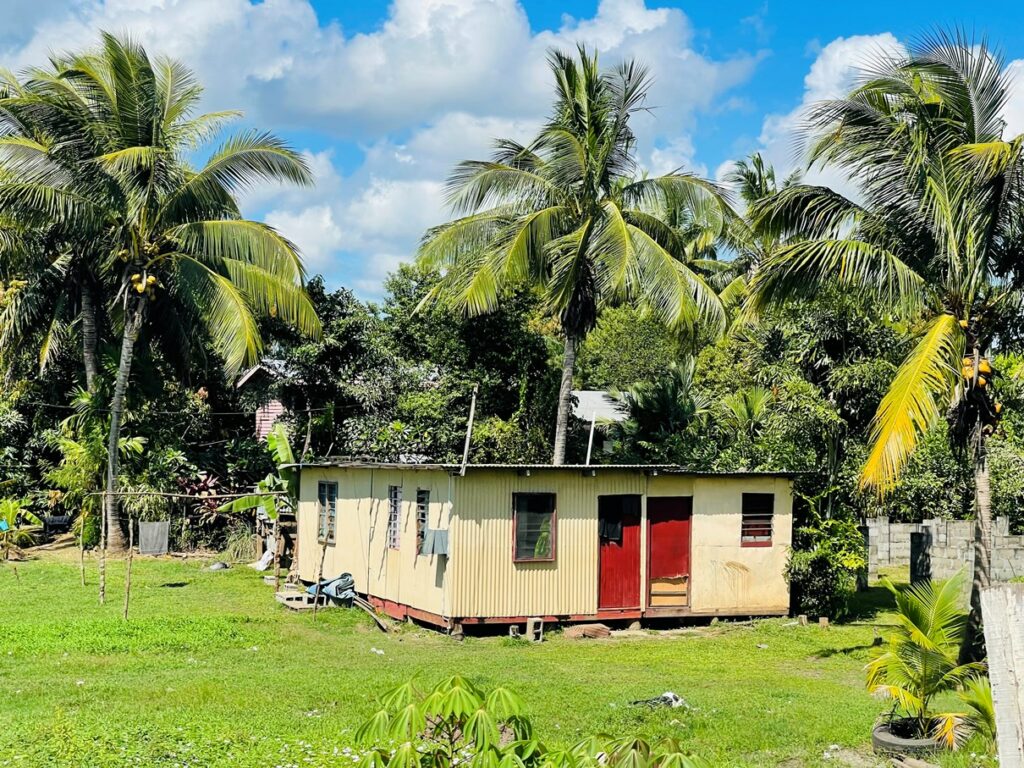
The traditional Fijian villages, with small one- or two-roomed buildings all in close proximity, were dotted along the main highway every few kilometres and delineated by huge speed humps at each end. These were often unpainted, resulting in a number of “oh shit” hard braking moments. It should come as no surprise that the most common unintended vehicle modification in Fiji is to have your front bar dragging along the ground after meeting a speed hump…at speed.
Leading up to the trip, I had been warned by most locals to stick to the main drag, as venturing away from it could quickly become disastrous. Mrs Chef was keen to check out Momi Bay, which contained a new resort and a few other tourist attractions, and looked to be a relatively cruisy loop of about 50km back to the highway, but it was so poorly signposted that we missed the turnoff. Being a bit bummed about that, we looked for another adventure and found a smaller, 20km coastal loop that began at Tuva and wound its way past the Intercontinental Fiji Golf Resort and through another village named Malomalo.
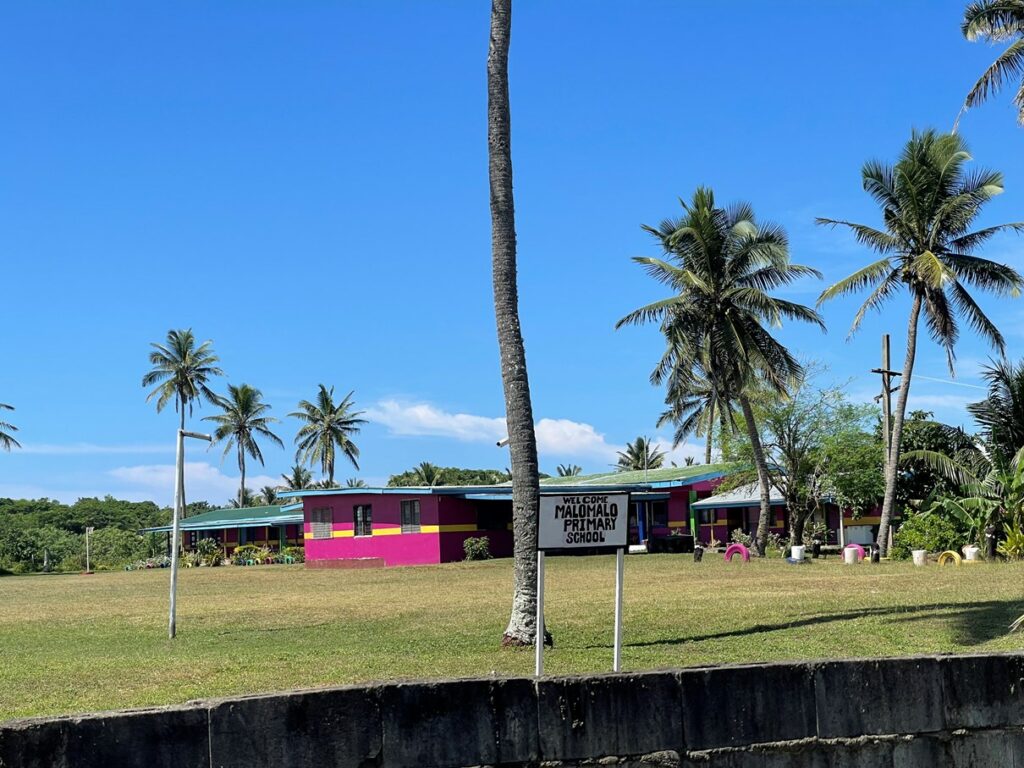
The road up to the resort was glorious; some of the nicest bitumen we encountered in Fiji, but once we’d passed the entrance, there was another maybe 1km of single lane width bitumen before we hit the dirt. I use the term dirt very loosely: imagine completely unmaintained 10-degree gradients, rocky outcrops with massive potholes and rocks the size of small boulders threatening to puncture your sump if you swerved the wrong way. Oh and a couple of boggy, sandy river crossings through mangrove swamps. On more than one occasion, we considered the option of turning around and heading back the way we came, only to be met by car loads of locals in a Prius or Honda Fit coming the other way, travelling way too fast for the conditions, smiling, waving and yelling out “Bulaaaa” the whole time. I reverted back to my Shitbox Rally days driving through the bush, where the mantra was that the only way we could get ourselves or the car in trouble was to drive too fast on unfamiliar roads. Accordingly, the ensuing 10km took somewhere around 45 minutes to traverse, and like the Shitbox Rally, the relief of spotting a sealed road again was palpable.
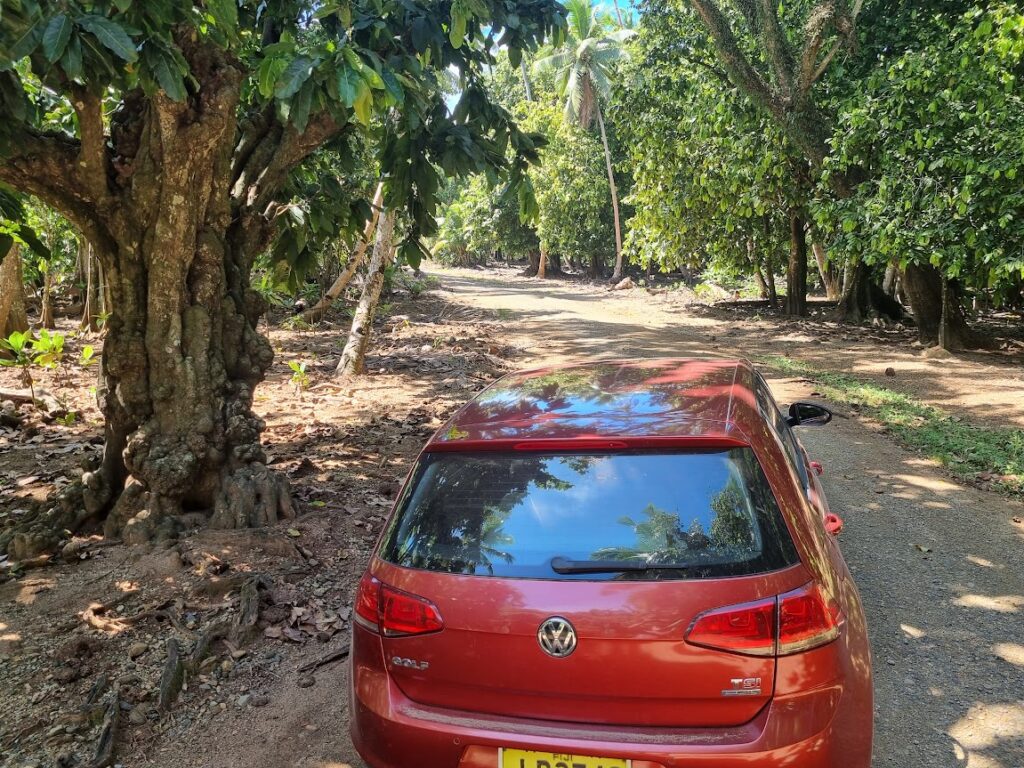
We then had a quick stop off in Voua to visit one of the coolest tourist attractions in Fiji, called Ecotrax. An enterprising NZ couple realised that some significant sections of the sugar-cane railway line in the area were no longer being used, and with the help of a number of locals, started building frames that bolted two bicycles alongside one another that could be ridden along the disused tracks with battery assistance. The 11km trip down to the beach, meal/drinks, then return to base makes for a great day out, and you can choose to pedal as much or as little as you like. Unfortunately for us, it’s also incredibly popular, so was well and truly booked out, but we thought we’d poke our head in, on the off chance that someone had cancelled at the last minute.
No such luck, but we did, however, have a good chat to Mandy, the owner, about the history behind the business, and she kindly let Kusi, one of the mechanics, take us out to do the first couple of kms of track for free. As with most locals, Kusi was friendly, softly-spoken and the size of a small block of flats, and he seemingly had no troubles turning the velocipede (which I guesstimate was probably 150kg with the battery pack) around on the tracks. If you’re heading to Fiji, book it at least a month before you head over. It’s well worth it.
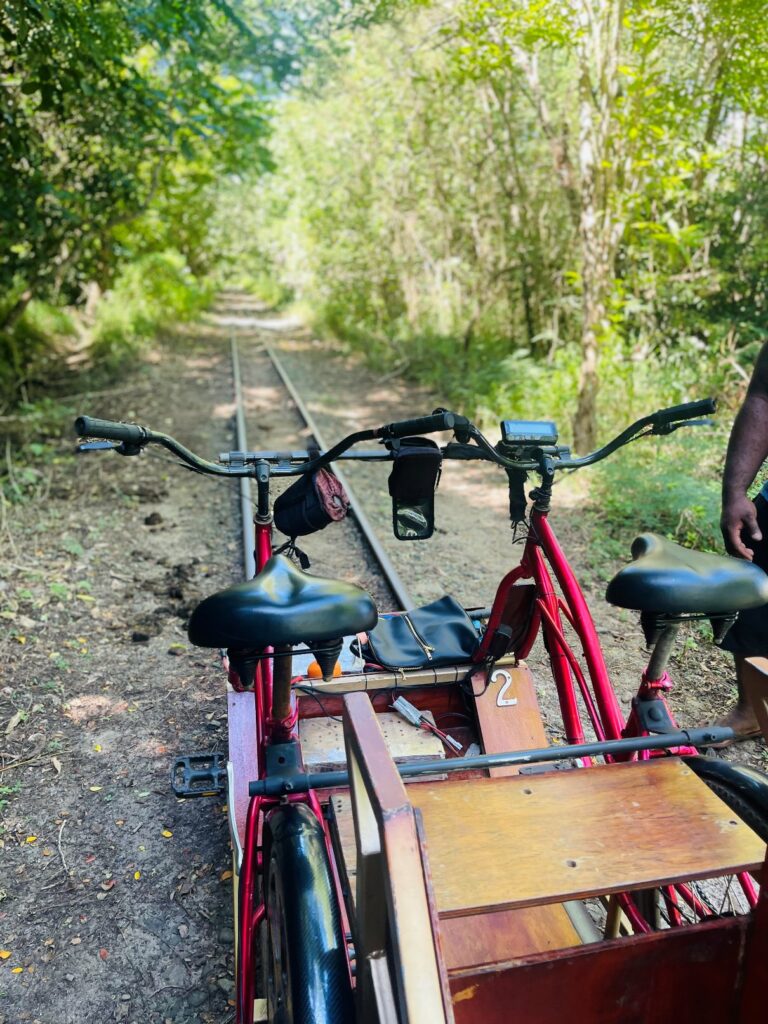
And so we pushed on. After a brief, failed attempt to have a look around the Shangri-la on Yanuca Island (even driving our “prestige” VW didn’t help us get past the gate), we finally found a large servo where we could stop to check tyre pressures and eat lunch. My apologies for talking in imperial measurements here – young folk feel free to convert it online. I plugged the front left tyre into the machine, and it came back at me with 46psi!
I laughed and started letting air out, only to stop again, wondering whether it was a local technique to protect rims from getting damaged on the potholes. Checking the front right quickly dispelled that theory: 23psi, or exactly half the pressure of the other front tyre. The rears? 26psi and just 18psi. I set them all to 36psi, all the while thinking about how dangerous it was that a hire car company had sent someone out in a car with tyre pressures that clearly hadn’t been checked since Michelin began writing restaurant reviews. I had fairly firm words with the staff when I returned the car, but given I dropped it off at 5am on a Monday morning, I’m quite sure my criticisms fell on deaf ears.
Inside the service station at Yadua was an Olive Tree restaurant, which seemed to be a nominally Mexican restaurant, but somehow also served a mish-mash of pizza, burgers, Indian, Korean and possibly some local options too, all against a backdrop of various quotes from the Bible painted all over the walls. It was an interesting meal, and the local kids running around us provided plenty of entertainment.
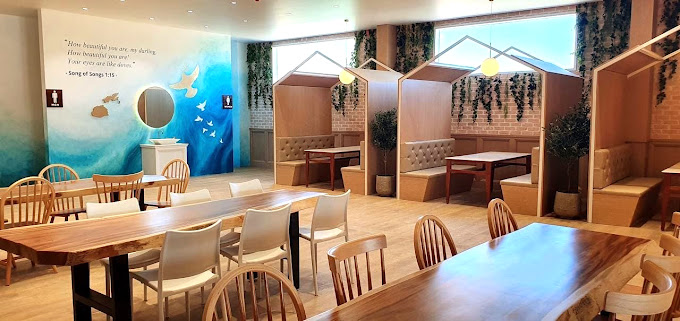
Once back in the car, it was then a constant stream of winding roads between rainforests and the ocean, dotted with small villages and those ridiculous speed humps, before opening out a little as the traffic built up heading into the outskirts of Suva. It was here that we spotted a first-gen Audi R8, gingerly tip-toeing over a speed hump. Hat tip to that brave (and presumably rich) soul.
Stay tuned for part 2 coming soon!
